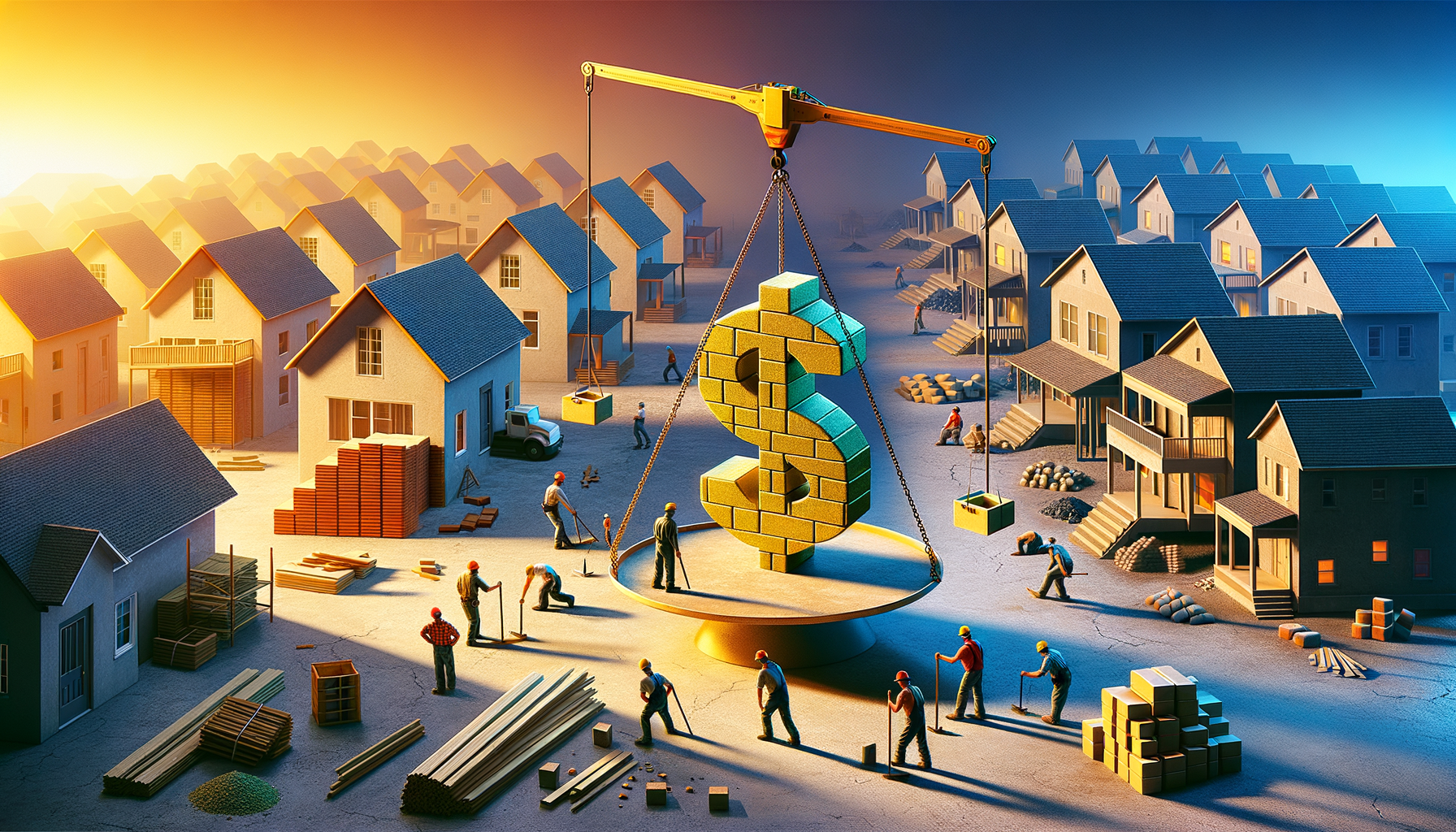“Exploring the Unprecedented Lows of Housing Affordability: An Analysis”

Today’s increasing house prices are causing real estate affordability to drop market-wide. While there are many factors contributing to these rising costs, the trend is showing no sign of slowing down. This fact has many potential homeowners feeling the pressure.
Homes are becoming increasingly difficult to afford. This is not just speculation; the data bears out this trend. The National Association of Home Builders (NAHB) has developed a Housing Opportunity Index (HOI) to measure housing affordability. Looking at the most recent figures, we can see that this index is at its lowest level historically, meaning that many people are simply priced out of the housing market.
In the final quarter of 2020, the HOI was just 58.3. This figure means that just over half (58.3%) of new and existing homes sold during this period were affordable to families earning the US median income of $72,900. The index fell four points from 62.4 in the third quarter, indicating a considerable decrease in overall affordability. Such a significant fall makes the sector challenging for first-time buyers, even amid historically low mortgage rates.
For the housing market, price escalation is a double-edged sword. On one side, higher prices indicate a strong market, more demand, and subsequently, more profitability for sellers and builders. But on the flip side, skyrocketing prices freeze out potential homeowners-especially first-time buyers and those earning below or near the median income.
A continual surge in home prices and a consistent upward shift in interest rates have been some of the major factors behind the deterioration in affordability. Mortgage rates, though still at historically low levels, are showing a steady upward curve.
However, increasing material prices, notably lumber, are playing a significant role in cost escalation. As per the NAHB’s estimation, from mid-April 2020 through mid-February 2021, a sharp rise in lumber prices alone has added approximately $24,000 to the cost of constructing a new home. This addition is a significant burden on builders and consumers alike.
Furthermore, land development is becoming increasingly complex and costly, contributing to the overall increase in home prices. Zoning laws, environmental regulations, and difficulties in obtaining development permissions escalate the cost and challenge of land development. In addition to this, labor shortages in the construction industry have also added to the rising costs of home-building, subsequently affecting housing affordability.
These factors, combined with low housing inventory, have created the perfect storm driving house prices upward. The ratio of house prices to income is a critical indicator of housing affordability. If this ratio is too high, it means that families will have to spend a larger portion of their income to own a home. Given the present trends, this ratio is rising alarmingly, indicating a fall in housing affordability.
Housing affordability is not just a one-off concern. It has long-term implications for overall economic health. Homeownership is a significant part of the American Dream, contributing to wealth-building, and creating stable communities. If people are priced out of the housing market, it may lead not only to increased rental demand and thus higher rental prices, but it could also widen wealth disparities.
It’s not all gloom, though. There are measures that can be taken to address affordability. One such measure could be an increase in the construction of affordable housing units by public, private or non-profit entities. Expediting the approval process for building permits could also ease the pressure on builders and subsequently lead to lower home prices. Moreover, policies aiming to control the prices of building materials, particularly lumber, or at least efforts to ensure a steady supply, could aim to cushion the impact of price hikes.
Furthermore, providing first-time buyers with financial resources like down-payment assistance programs and making mortgages more accessible and affordable could play a significant role in addressing affordability issues. Not forgetting, addressing the labor shortages in the construction industry could also bring down building costs.
Despite the affordable housing crisis, the desire among Americans to own a home remains steadfast. Therefore, to protect this aspirational goal and to ensure economic equilibrium, housing affordability should remain a top priority for policymakers and industry stakeholders.
In conclusion, although the current market conditions are steep, with concerted efforts from all the key stakeholders, a turnaround is certainly possible. It is expected that a multi-faceted approach that addresses all the factors driving up home prices could deliver the desired relief.
While this topic needs constant attention and assessment, let’s remember that housing is not just an economic issue—it’s a question of quality of life. A balanced housing market provides opportunities for everyone to afford a home; hence its importance cannot be overstated.
